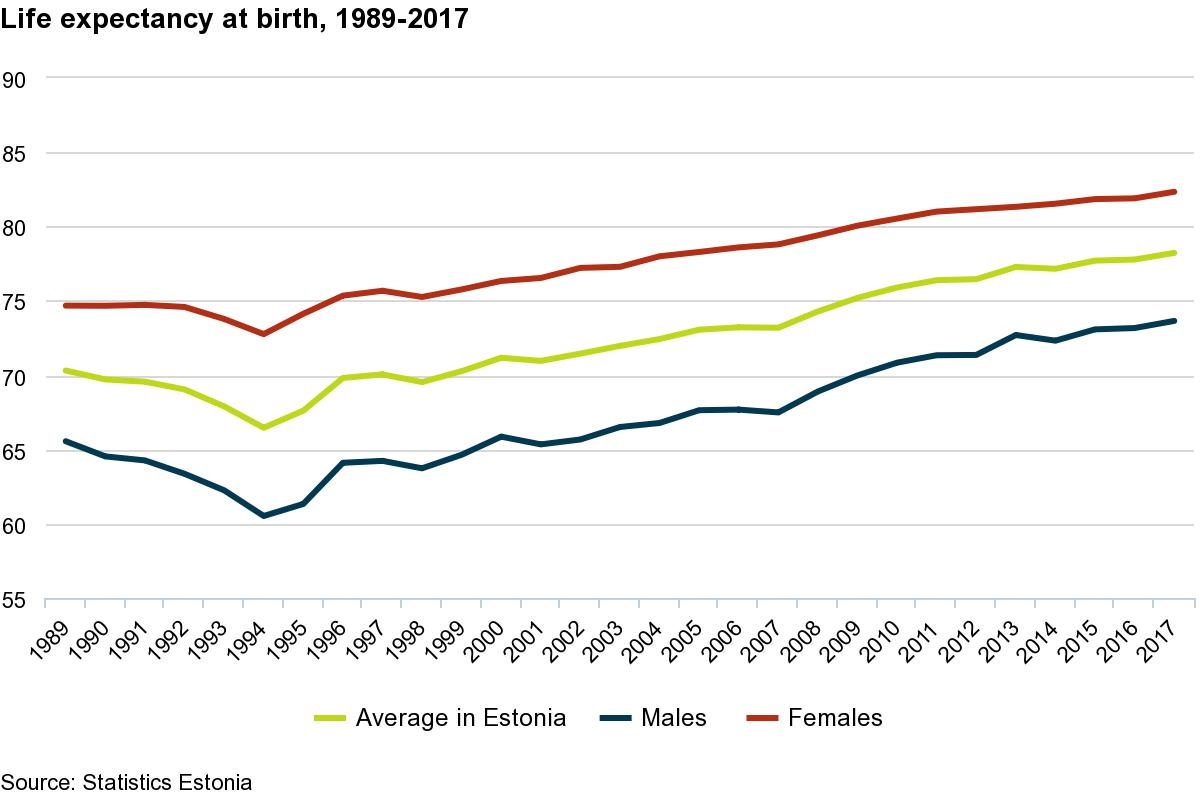Analytics, Demography, Estonia, Quality of life, Statistics
International Internet Magazine. Baltic States news & analytics
Thursday, 25.04.2024, 08:34
Life expectancy is increasing in Estonia
 Print version
Print versionThe lowest
life expectancy since Estonia regained its independence was at the beginning of
the 1990s: in 1994, male life expectancy was 60.2 and female life expectancy
was 72.8 years. Since then, people’s health has improved, youth mortality
related to accidents has decreased and life expectancy has increased.

The
difference between male and female life expectancy is decreasing: in 1994, the
difference was 12 years, ten years ago, it was over 10 years, and by 2017, it
was 8.6 years.
Compared to
the average life expectancy in the European Union, people in Estonia live on
average 3 years less, but this difference has diminished over the years.
Compared to the European Union average, the female life expectancy in Estonia
is 1.4 years shorter and the male life expectancy is 5 years shorter. According
to 2016 data, in the European Union, the longest life expectancy for males was
in Italy (81.0 years) and for females in Spain (86.3 years). Estonia ranks 23rd
in the European Union in terms of male life expectancy; it is shorter in
Lithuania and Latvia. As for female life expectancy, Estonia has a higher 19th
ranking, ahead of all the former Eastern Bloc countries. Bulgaria and Romania
have the lowest female life expectancy indicators. On average, in the European
Union, the difference between male and female life expectancy is 5.4 years. The
difference is smallest in the Netherlands (3.2 years) and greatest in Lithuania
(10.6), Latvia (9.8) and Estonia (8.6). In Europe, such greater differences can
only be found in the other former Soviet Union countries.
Life
expectancy depends on many factors, the most important of these being the
environment, accessibility of healthcare services, living standard and health
consciousness. The somewhat shorter male life expectancy is not surprising as
men are more prone to risk-taking. The greater share of physically demanding
jobs or those posing more risk to health is a likely factor. In Estonia, more
people on average have blue-collar jobs and there are more blue-collar workers
among men. This could be one explanation for the greater difference in male and
female life expectancy.
Statistics
Estonia calculates life expectancy separately for urban and rural population,
population of counties, by nationality and, as of 2017, by education, as a new
indicator. Life expectancy is greater in urban areas, among people of Estonian
nationality and people with higher education. The difference between male and
female life expectancy is also decreasing in these groups. Life expectancy of
males and females with higher education differs by 7.7 years, while in the case
of basic education, the difference is 10.1 years. The difference in the life
expectancy between females with higher education and males with basic education
is 17 years.








 «The Baltic Course» Is Sold and Stays in Business!
«The Baltic Course» Is Sold and Stays in Business!

